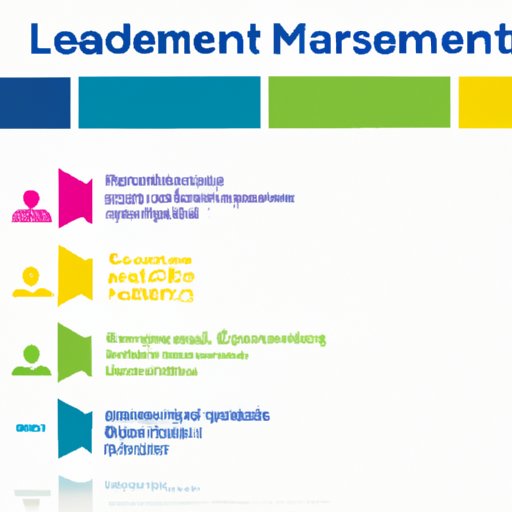Introduction
Leadership development is a term that encompasses the process of improving an individual’s leadership capacity. This process can involve learning new skills, honing existing ones, and developing emotional intelligence. Organizations invest in leadership development for many reasons, such as to increase employee engagement and motivation, boost morale, improve communication, and create a culture of collaboration. But how do you know if these investments are actually working? Measuring the success of a leadership development program is essential to understanding its impact.
Analyze Employee Surveys
One of the most effective ways to measure the success of a leadership development program is to analyze employee surveys. Surveys provide valuable insight into how employees feel about their leaders and their work environment. They can help identify areas of improvement and reveal which areas are already strong. To get the most out of employee surveys, it’s important to ask the right questions. Examples include:
- Do you feel your leader listens to your ideas and concerns?
- Do you feel supported by your leader?
- Do you feel your leader holds you accountable for your work?
- Do you feel your leader has helped you develop as a professional?
These types of questions will provide a clear picture of how employees feel about their leaders, which can then be used to inform decisions about future leadership development initiatives.
Track Performance
Performance metrics are another way to measure the success of a leadership development program. These metrics provide a quantitative assessment of the program’s effectiveness. Examples of performance metrics include:
- Employee engagement scores
- Team productivity
- Customer satisfaction ratings
- Revenue growth
These metrics can give a clear indication of whether or not the leadership development program is having a positive impact on the organization. Monitoring these metrics over time can also provide insights into how the program is progressing and where improvements might be needed.
Observe Interactions
Observing interactions between leaders and followers can also provide useful insights into a leadership development program’s effectiveness. Leaders who have been through a development program should demonstrate improved communication and collaboration skills. These changes can be seen in how they interact with their team members. For example, do they demonstrate active listening skills? Are they open to feedback? Do they provide support and encouragement?
Observing interactions can also reveal whether or not leaders have adopted the values and principles taught in the development program. If they have, this can be seen in how they respond to difficult situations or handle conflicts. By observing interactions, organizations can gain a better understanding of how effective their leadership development programs are.
Assess Skills
Another way to measure the success of a leadership development program is to assess the skills acquired through the program. This can be done by evaluating how well leaders apply the knowledge and skills they have learned. For example, have they become more effective communicators? Do they make better decisions? Are they better problem solvers?
These assessments can be done using real-life scenarios. For instance, if a leader has just completed a course on conflict resolution, they could be asked to resolve a hypothetical conflict between two employees. Evaluating their response can provide valuable insight into how well the leader has absorbed the material and applied it in practice.
Monitor Retention Rates
Retention rates are another metric that can be used to measure the success of a leadership development program. High retention rates are indicative of an engaged and motivated workforce. Low rates, on the other hand, suggest that employees are dissatisfied with their work environment and may be looking for new opportunities elsewhere. Monitoring retention rates can help organizations identify potential issues, allowing them to address them before they lead to a mass exodus.
Retention rates can also be used to measure the effectiveness of specific leadership development programs. For example, if a program is designed to increase employee engagement, the retention rate should increase after the program is implemented. If it does not, this suggests that the program was not successful and needs to be reevaluated.
Conclusion
Measuring the success of a leadership development program is essential to understanding its impact. There are several ways to do this, such as analyzing employee surveys, tracking performance, observing interactions, assessing skills, and monitoring retention rates. By measuring these metrics, organizations can gain valuable insight into the effectiveness of their leadership development programs and identify areas for improvement.
Final Thoughts
Leadership development is a key part of any successful organization. Measuring the success of these programs is essential to ensure they are having the desired effect. By analyzing employee surveys, tracking performance, observing interactions, assessing skills, and monitoring retention rates, organizations can gain a better understanding of how effective their leadership development initiatives are and make necessary adjustments.
(Note: Is this article not meeting your expectations? Do you have knowledge or insights to share? Unlock new opportunities and expand your reach by joining our authors team. Click Registration to join us and share your expertise with our readers.)
